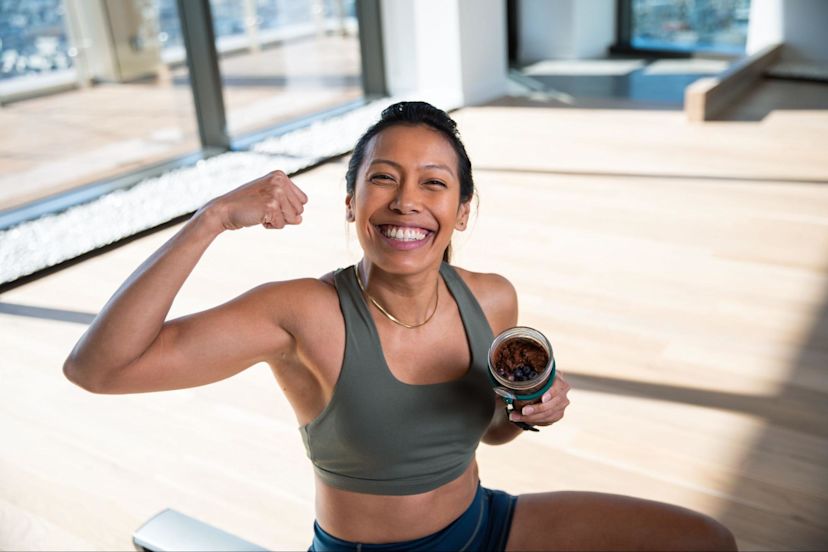5 Reasons for Triathletes to Join In On National Learn to Row Day

Rowing is quickly becoming the go-to workout for cross training and triathletes are taking notice. Few sports target more muscles in less time. While biking and running mainly hit the lower half, rowing is a true full-body workout — legs, arms, shoulders, glutes, core — making the rowing machine a solid addition to your triathlon training.
In celebration of National Learn to Row Day (June 4, 2022), Hydrow Strength and Conditioning Coach Peter Donohoe, two-time Olympian and former track and field star, explains the top five reasons you should take up rowing:
1. Rowing is a solid way to build endurance without the impact load from running the roads.
Running efficiently is key to triathlon success, but logging high mileage can be rough on the body. Rowing is a great way to reduce the risk of overuse injury while maintaining the gains in aerobic base (and increases in anaerobic threshold) traditionally derived from high mileage and tempo training.
2. Rowing builds a stronger lower body / upper body connection.
With proper technique, rowing builds a very powerful core — the key ingredient in efficiently transferring power during run, bike, and swim (and a missing element in many training programs).
3. Rowing is great when you can’t get to the pool.
The core and upper body recruitment from the rowing stroke can help train and augment your swimming stroke. If you’re looking for cross training (or want to change up your routine), adding meters on the rower is a good option when pools are hard to find.
4. Rowing is the secret weapon of some of the world's best cyclists.
German national team rower Jason Osborne shocked the cycling community in late 2020 when he beat a host of professional cyclists to win the first UCI Cycling Esports World championship on Zwift. And he’s not alone — the power developed in rowing has transferred to cycling for a number of pros, including 2008 Beijing cycling gold medalist Rebecca Romero and pro triathlete Cameron Wurf. Following in Wurf’s footsteps, world champion rower Lars Wichert is making his Ironman bid on the back of his rowing-derived fitness. Our hypothesis? The sustained power and cardiovascular endurance needed in the boat transfers smoothly to the road (with rower Osborne clocking an awesome 480-watt 20-minute cycling test result according to Velo News).
5. Rowing changes the movement pattern, enhancing resilience while building performance.
It gets triathletes out of the typical positions they spend hours in each week. For swimming, you’re taking an overhead athlete and training them horizontally, which will be good for their lats and shoulders. For runners, rowing gets them off the road in order to rest their joints but still helps them build power, strength and endurance in their legs. Using a different modality (variety of workout type) triggers different motor patterns. By changing the stimulus, you can help heal the body while continuing to build performance. It’s a remarkable win-win.
To get the full rowing experience in the comfort of your own home, the Hydrow rower provides Live Outdoor Reality™ like no other connected fitness device. Join professional rowing champions on beautiful, scenic waterways around the world — from London to Loch Ness, Boston to Miami — as they teach, inspire, and entertain you through workouts ranging from easy to all-out expert level. One membership provides unlimited profiles for everyone in your family as well as access to off-rower strength and mobility workouts like yoga, Pilates and more.


